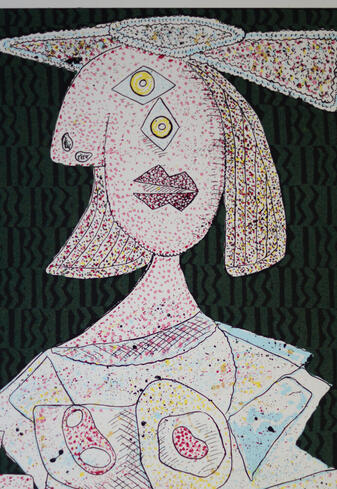
Enrico Baj
Enrico Baj (1924–2003) was an Italian artist heavily influenced by his political views as an anarchist
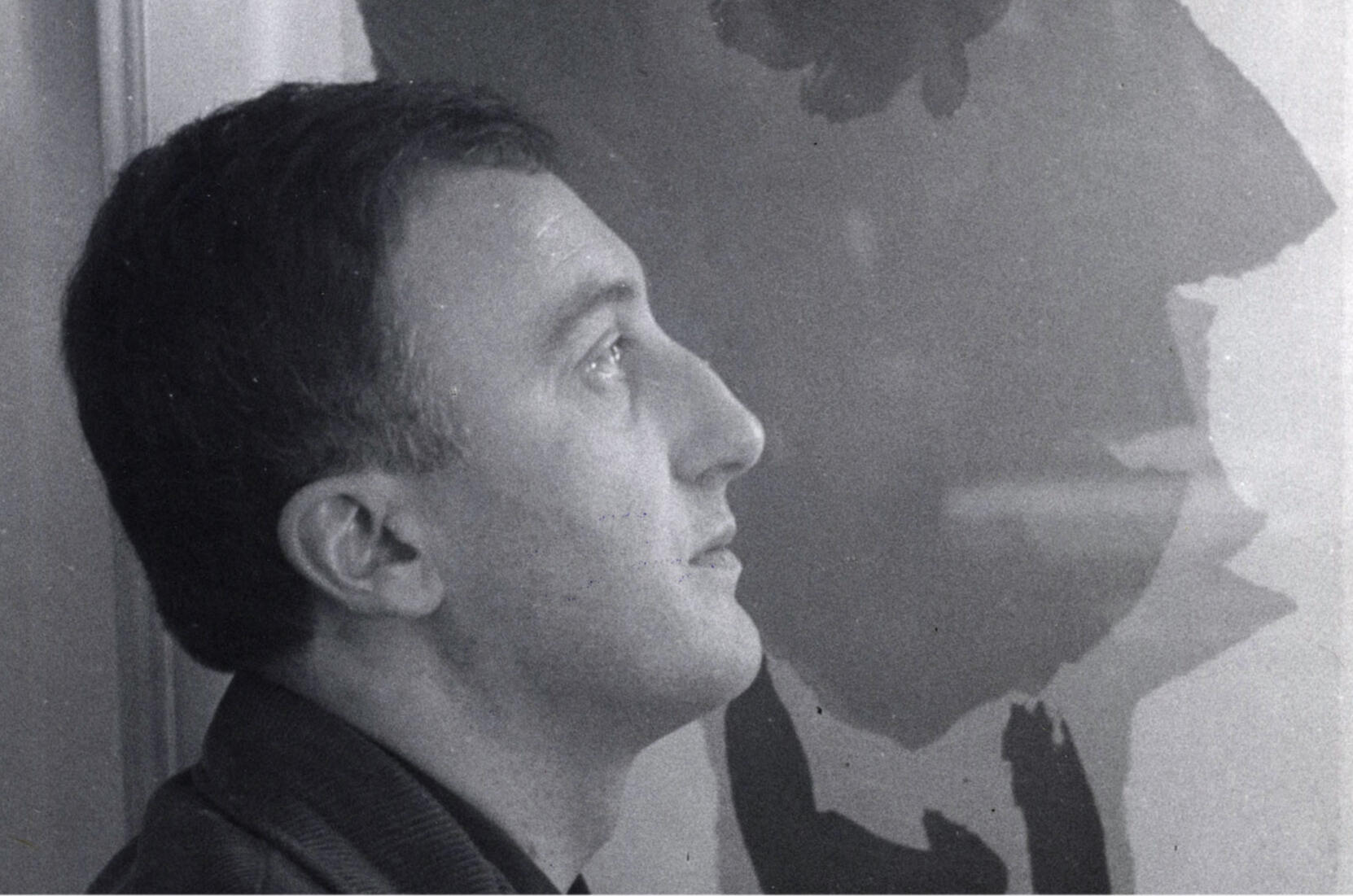
Nuclear Art
Enrico Baj (1924–2003) was an Italian artist renowned for his satirical and eclectic approach to painting, collage, and assemblage. Born in Milan, he studied at the Brera Academy and was deeply influenced by Dada, Surrealism, and the CoBrA movement. In 1951, he co-founded Nuclear Art, a movement that reacted to the atomic age with grotesque and chaotic imagery, often infused with dark humor and political critique.
One of the top collage artists
Baj’s work frequently incorporated collage techniques, using fabric, embroidery, mirrors, buttons, wallpaper, and other found materials to create richly textured compositions. His “Generals” series, one of his most famous, satirized military figures by constructing them from gaudy medals, brocades, and kitsch elements, emphasizing their absurdity and vanity. He also used collage extensively in his “Ladies” series, where female figures were similarly built from decorative materials, critiquing notions of aristocracy and excess.
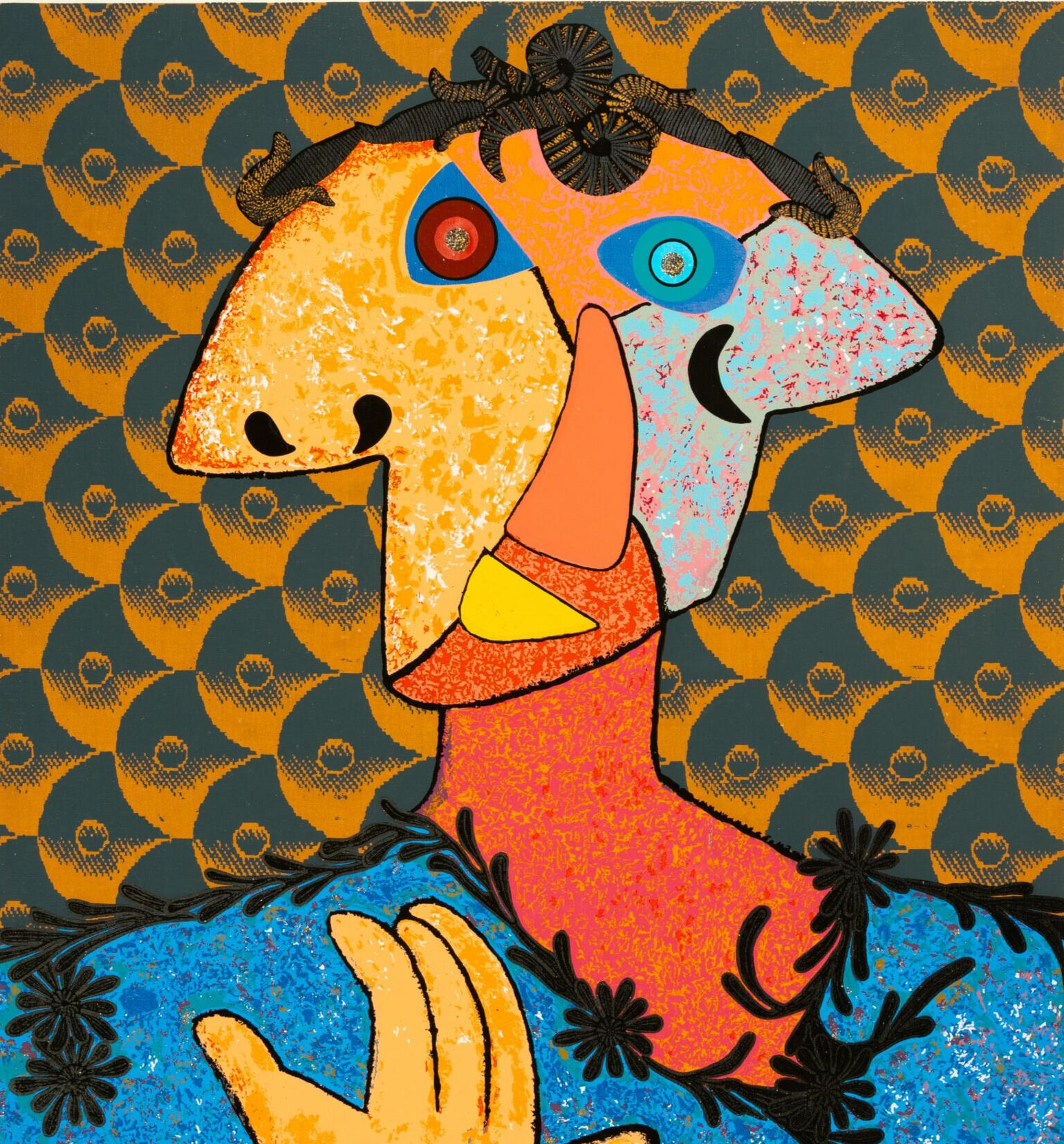
Collaborations
Beyond his figurative work, Baj’s abstract collages often combined painted elements with torn or layered materials, creating energetic and unpredictable surfaces. His collaborations with writers and poets, such as André Breton and Edoardo Sanguineti, further expanded his experimental use of mixed media. Throughout his career, Baj remained a playful yet politically engaged artist, using collage as a means of visual rebellion against authoritarianism, war, and bourgeois aesthetics.
Political Baj
Baj died at the age of 78 and to the very end he was engaged directly with topical issues - from the threat of nuclear war to the advent of Silvio Berlusconi.
Early Years
Born into a prosperous Milanese family, Baj showed a rebellious streak from an early age. As a boy, he fell foul of the local police for standing to mock attention in front of visiting fascist officials, and, in 1944, he fled to Geneva in order to avoid conscription. After the second world war, he simultaneously studied at the Milan University law faculty and the Brera Academy of Art, though neither seems to have left much of an impression
Artistic invention and kitsch
Baj became increasingly convinced that mass consumption had produced a culture in which artistic invention was replaced by endless repetition and kitsch. His response was to create his own copies of great modern painters, from Seurat to De Chirico and Picasso. In place of contemporary art's stultifying unoriginality, these free adaptations exemplified his talent for imaginative association and collage
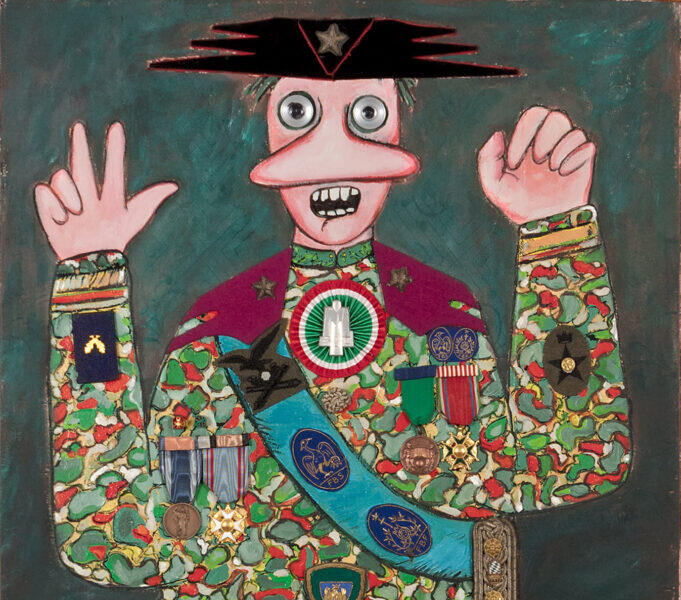
Funeral Of The Anarchist Pinelli
His use of motifs from Picasso's works, especially Guernica, culminated in the monumental Funeral Of The Anarchist Pinelli (1972), which satirised the supposedly accidental death of an activist in police custody. Its proposed exhibition in Milan was banned after the assassination of the officer widely regarded as responsible for Pinelli's death.
Apocalypse
Undaunted, Baj continued to make highly political images on an immense scale: Nixon And Kissinger At The Columbus Day Parade (1974) was followed by Apocalypse (1978-83), in which he expressed his horror at the corruption and environmental degradation of the planet. This disgust reached a climax in 1994 with the first election of Italy's current premier, and the production of Berlus-kaiser, a sardonic painting populated, like Apocalypse, by grotesque silhouetted figures.
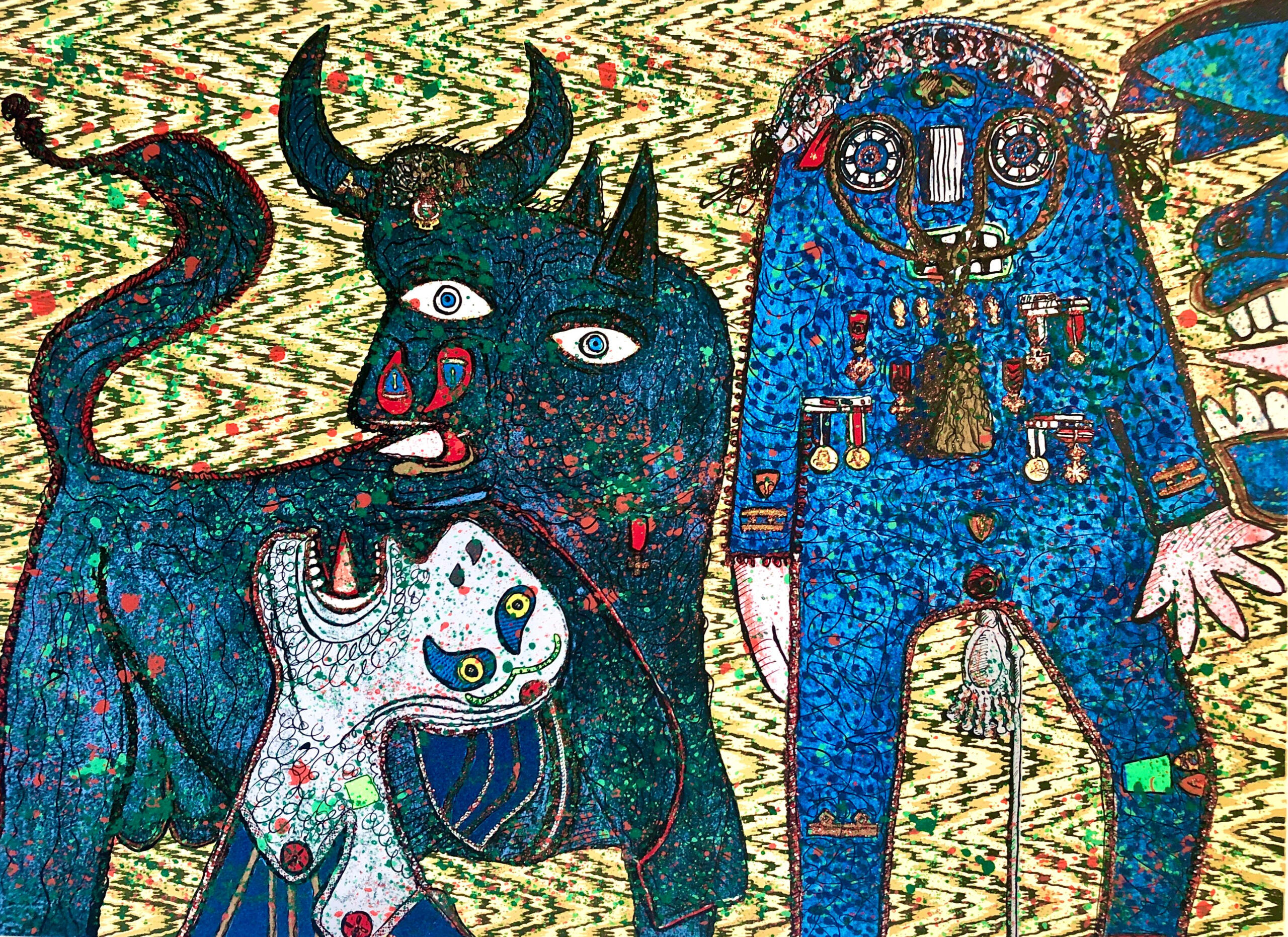
Analogic Emperor for Italy
Baj's publications included Automitobiogafia (1983) and Kiss Me, I'm Italian (1997). His proudest honour was his appointment by the College of Pataphysics to the high office of Analogic Emperor for Italy, Padania, Albania and the campanile of San Marco (1997). For more information on Enrico Baj and to join our free newsletter, please enter yur details below
© Enricobaj.com 2024 All right reserved.
We hope you enjoyed your visit to our site
He had five children from two marriages.
Enrico Baj, painter, born October 31 1924; died June 15 2003